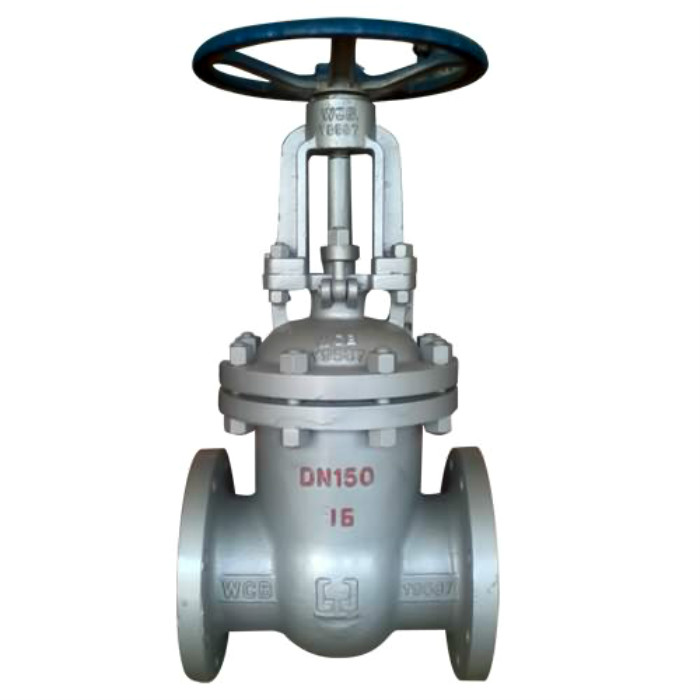Structure and difference between rising stem flanged gate valve and non rising stem flanged gate valve

Considering the difference in stem types, gate valves can be divided into:
A. rising stem flanged gate valve: The stem nut is on the bonnet or bracket. When the wedge is opened and closed, the stem is rotated to achieve the lifting of the stem. This structure is beneficial to the lubrication of the valve stem, and the degree of opening and closing is obvious, so it is widely used.
B. Non rising stem flanged gate valve: The stem nut is in the valve body and is in direct contact with the medium. When the wedge is opened and closed, it is realized by rotating the valve stem. The advantage of this structure is that the height of the gate valve is always the same, so the installation space is small, which is suitable for gate valves with large diameter or restricted installation space. This structure should be equipped with an opening and closing indicator to indicate the degree of opening and closing. The disadvantage of this structure is that the thread of the valve stem is not only unable to be lubricated, but also directly damaged by the medium and easily damaged.
Differences between rising stem and non rising stem flanged gate valve
1. Non rising flanged gate valve only rotates without stem moving up and down. Only one end of stem is exposed, and the nut is fixed on the wedge. The drive thread of the non rising stem gate valve is located inside the valve body. During the opening and closing process, the valve stem only rotates and the gate moves up and down in the valve body. Therefore, the height dimension of the valve is small. Rising stem gate valve has exposed lift stem and the nut is fixed closed to handwheel. The gate is lifted by rotating the screw. The stem and wedge only have relative rotational movement without relative axial displacement.
2. The non rising stem flanged gate valves can't see the screw, while the bright rod can see the screw.
3. When the non rising stem flanged gate valve is opened and closed, the steering wheel and the valve stem are connected together and are relatively immovable. It is opened and closed by turning the valve stem at a fixed point to drive the valve wedge upward and down. The rising stem gate valve is used to raise or lower the valve wedge through the threaded transmission of the valve stem and the steering wheel.
4. The stem of the rising stem flanged gate valve drives the wedge to move up and down. The transmission thread on the valve stem is outside the valve body. Therefore, the movement and position of the gate can be visually judged based on the direction and position of the valve stem. Transmission thread helps the lubrication free from fluid corrosion, but it requires a large installation space